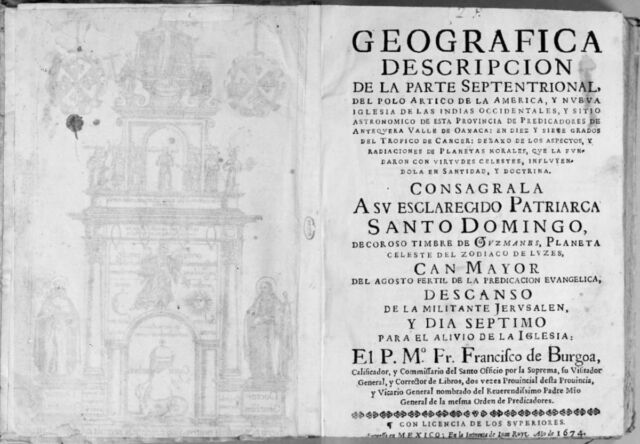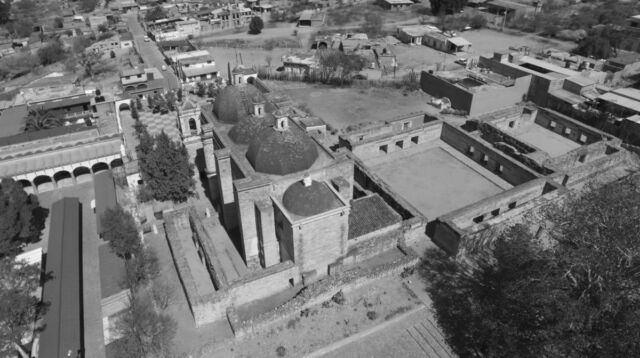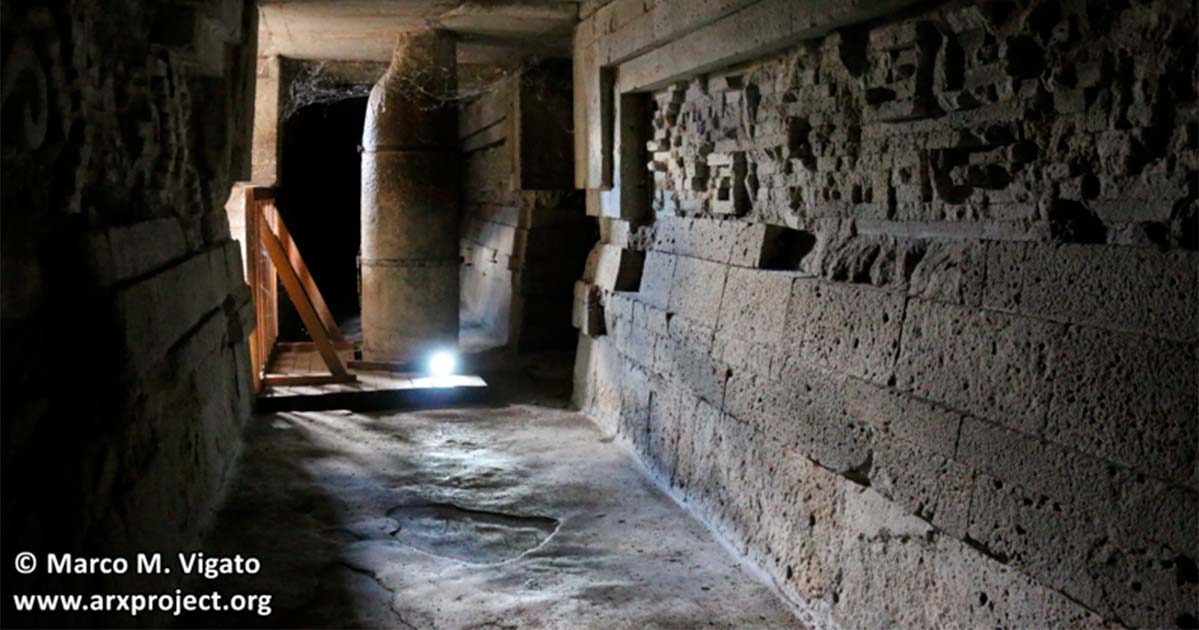Spanish missionaries deemed Lyobaa to be a "back door to hell" and sealed all entrances.
An archaeological research expedition has uncovered evidence of a legendary subterranean labyrinth under
the ruins of Mitla in Oaxaca, Mexico, believed by the ancient Zapotecs to be an entrance to the underworld
they called Lyobaa.
In 1674, a priest named Francisco de Burgoa published his account of visiting the ruins of the Zapotec city of Mitla in what is now Oaxaca in southern Mexico. He described a vast underground temple with four interconnected chambers, the last of which featured a stone door leading into a deep cavern. The Zapotec believed this to be the entrance to the underworld known as Lyobaa ("place of rest"). Burgoa claimed that Spanish missionaries who explored the ruins sealed all entrances to the temple, and local lore has long held that the entrance lies under the main altar of a Catholic church built over the ruins.
An international team of archaeologists recently announced that they found evidence for this fabled underground labyrinth under the ruins—right where the legends said it should be—after conducting scans of the site using ground penetrating radar (GPR), electrical resistivity tomography (ERT), and seismic noise tomography (SNT). The team also found evidence of an earlier construction stage of a palace located in another part of the site.
Mitla is one of the most significant archaeological sites in Oaxaca Valley. It was an important religious center, serving as a sacred burial site—hence its name, which derives from Mictlan ("place of the dead" or "underworld"). The unique structures at Mitla feature impressively intricate mosaics and geometric designs on all the tombs, panels, friezes, and walls, made with small polished stone pieces fitted together without using mortar.

Title page of Father Burgoa’s Geographica Descripción (1674).
ARX Project
Spanish soldiers and Christian missionaries began arriving in the valley in the 1520s, and several mentioned the ruins of Mitla in their accounts. Naturally, they interpreted the underground temple as a site for an "evil spirit" and its "demoniacal servants." Burgoa's writing is the most descriptive, detailing how the Zapotec high priest used the palace of the living and the dead. He marveled at the mosaics and skilled construction of the site. And he specifically mentioned four chambers above the ground and four chambers below the ground.
Per Burgoa, the first underground chamber served as a chapel; the second was where the high priests were buried; the third was where the kings were buried, along with their luxurious worldly goods; and the fourth featured a door at the rear which purportedly led to "a dark and gruesome room." A stone slab covered the entrance. "Through this door they threw the bodies of the victims of the great lords and chieftains who had fallen in battle," Burgoa wrote. It seems that certain "zealous prelates" decided to explore the underground structures, carrying lighted torches and using ropes as guides to ensure they didn't get lost. They encountered "putrefaction," foul odors, and "poisonous reptiles," among other horrors.
Once back above ground, the explorers walled up what they considered to be a "back door to hell." An archbishop ordered Mitla destroyed in 1553, and the stone blocks and other rubble were used to build various Spanish Catholic churches, most notably the Church of San Pablo, built right on top of part of the ruins. Several modern explorers subsequently found their way to the ruins at Mitla between 1834 and 1960. Various small underground chambers were discovered during those and later excavations, but nothing that matched Bergoa's description of a vast labyrinthine network of large connected chambers. Still, the legend persisted.

Aerial view of the Church Group of Mitla, with the Church of San Pablo facing west.
Marco M. Vigato/ARX Project
Enter the fine folks at the Archeology Research and Exploration (ARX) Project. They started a collaboration called Project Lyobaa with the Mexican National Institute of History and Anthropology (INAH) and the National Autonomous University of Mexico (UNAM) to apply non-destructive geophysical methods commonly used for archaeological research and conservation to the site in hopes of uncovering evidence of the lost underground chambers. The three methods measure different reflection properties of various types of electromagnetic and seismic waves through various subsoil layers and materials. Among other uses, this can help detect any underground cavities—like those the Zapotec reportedly used in rituals connected with the cult of the dead—or buried objects and/or archaeological structures.
Today's site has five distinct groups of buildings: the South, the Adobe, the Arroyo, the Columns or Palace, and the Church or North Group. The latter two have been fully excavated and restored and are open to the public, and both feature single-story rectangular buildings surrounding rectangular courtyards. The team decided that the Church Group seemed the most likely match for Burgoa's 17th century description, particularly since that area has not yet been extensively explored, given that the Church of San Pablo still stands over the ruins.
For instance, the Church Group has three communicating courtyards of diminishing sizes, surrounded by rooms on all four sides, and there is a strong possibility that a fourth courtyard existed either to the north or the south. That matches Burgoa's description of four communicating chambers (or courtyards) above ground and four below. The Church Group sits on natural bedrock in an area known for natural caverns. The team thought building a Catholic church on top of the ruins was a way to "Christianize" a ritualistic site. Plus, San Pablo is a saint associated with caves and other underground spaces.

Seismic tomography scan of the Church Group at the frequency of 4.76 Hz, revealing areas of
low velocity (in blue) that could indicate the presence of underground chambers or natural cavities.
Marco M. Vigato/ARX Project
So they placed various arrays of electrodes and geophones around the church. Once all the data and imagery collected with GPR, ERT, and SNT had been combined, the team produced a 3D model of the site. The GPR and ERT data confirmed the existence of a large void beneath the main altar of the Church of San Pablo, which seemed to connect with another anomaly to the north of the Church. There are also two passages entering the main void from the east, between five and eight meters deep. The team was also able to identify a possible blocked entrance under the main altar.
Furthermore, there was evidence of an earlier construction phase for the Palace of the Columns (in the Columns Group), in the form of a stairway leading to a portico with two doorways, as well as evidence of a deep trench that may have been dug by archaeologists or treasure hunters sometime in the past century. The same joint team will return to Mitla later this year to continue their geophysical research, this time expanding their focus to incorporate groups of structures to the west and south of the site. They are also seeking permission to conduct more scans of the church of San Pablo to get images with better resolution.
Listing image by Marco M. Vigato/ARX Project
Source




3175x175(CURRENT).thumb.jpg.b05acc060982b36f5891ba728e6d953c.jpg)



Recommended Comments
There are no comments to display.
Join the conversation
You can post now and register later. If you have an account, sign in now to post with your account.
Note: Your post will require moderator approval before it will be visible.